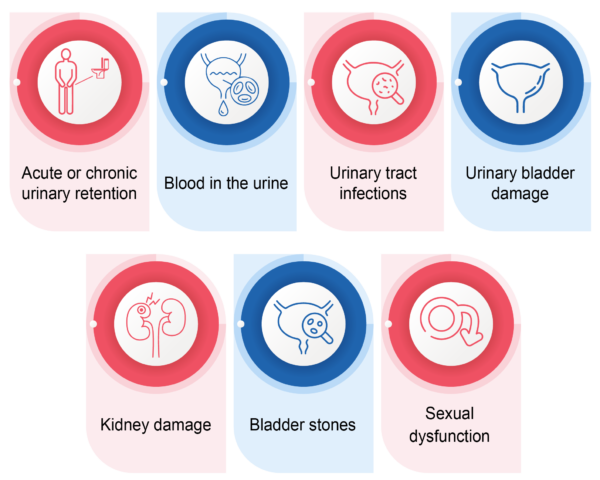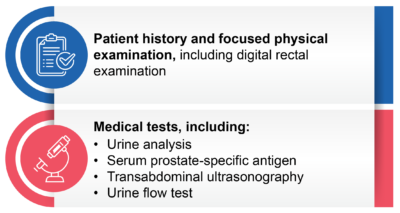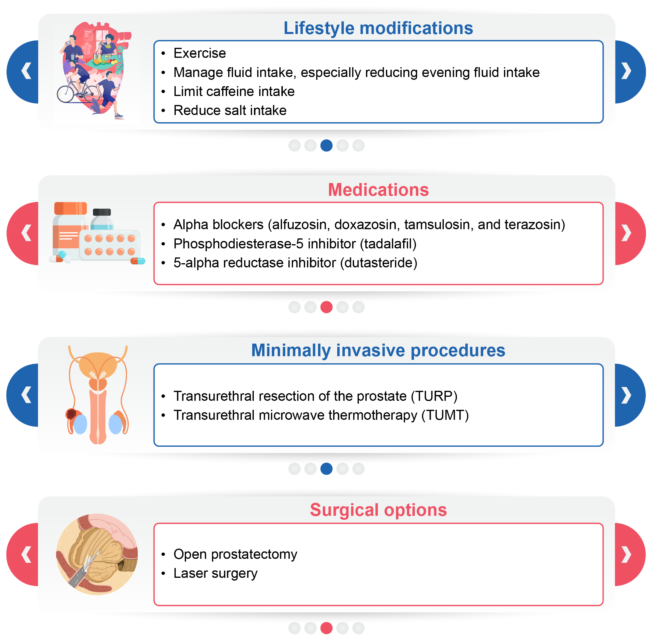
Health Resources
- Home
- Health Resources
- Benign Prostatic Hyperplasia
Benign Prostatic Hyperplasia

A Closer Look at the Prostate Gland
The prostate is a small, walnut-shaped gland of the male reproductive system. Its main function is to produce a fluid that mixes with sperm to create semen. This fluid is important for a man’s fertility. 1
The prostate gland surrounds the urethra, the tube that carries urine from the bladder out of the body. The prostate is located just below the bladder, where the urethra connects to the bladder. 1
The lower urinary tract includes the bladder and the urethra. The bladder stores urine, and the urethra is the tube that carries urine out of the body. 1
Understanding Benign Prostatic Hyperplasia
Benign prostatic hyperplasia (BPH) means an enlarged prostate gland that is not cancerous. The word “benign” means it is not cancerous, and “hyperplasia” means there is abnormal growth of the prostate cells. 2
The end result of BPH is an enlarged prostate gland. It is important to know that BPH is not linked to prostate cancer and does not increase the risk of getting prostate cancer. However, the symptoms of BPH and prostate cancer can be similar, so it’s important to see a doctor if you have any concerns. 2
As men get older, their prostate goes through 2 main growth stages. The first happens during early puberty when the prostate doubles in size. The second growth phase starts around the age of 25 and continues for most of a man’s life. BPH often develops during this second phase of growth. 1
In Singapore, the number of BPH cases increased by 3.18% from 2000 to 2019. BPH becomes more common as men get older, with the prevalence reaching 8% at age 40, 50% at age 60, and 80% by age 90. 3,4
Who Are at Risk of BPH?
Men who possess the following factors are at a higher risk of developing BPH: 1
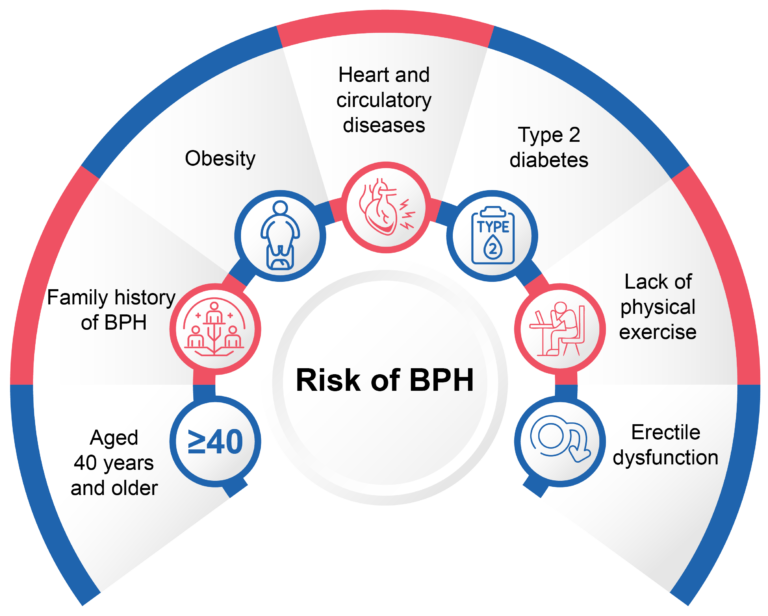
Spot the Signs: Identifying Symptoms of BPH
Here are several lower urinary tract symptoms (LUTS) indicative of BPH that demand attention, as they can significantly lead to deteriorating quality of life: 1,5


Symptoms of BPH usually occur when the urethra is blocked, causing pressure on the bladder as it struggles to push urine past the blockage. The intensity of these symptoms can be evaluated using the International Prostate Symptom Score (IPSS), a validated questionnaire that patients can fill out to help assess the severity of their LUTS. 6

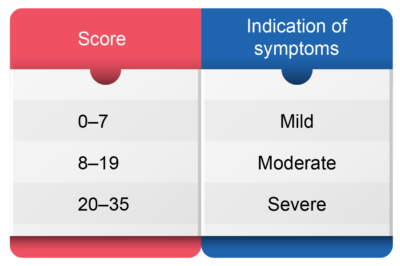
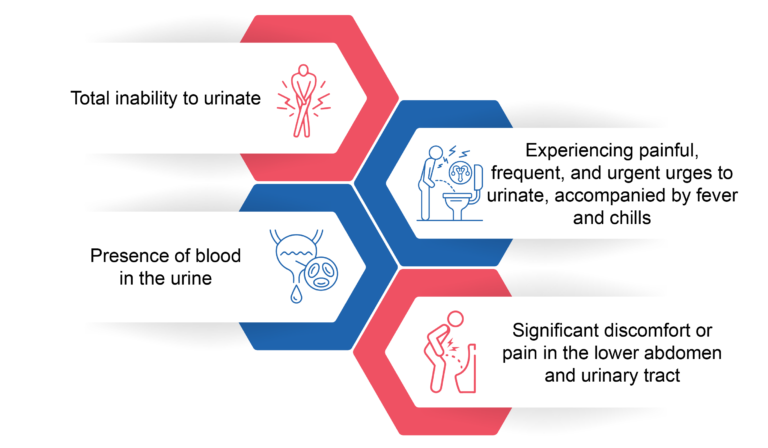
Ways to Prevent BPH
Several preventive ways could delay the onset, hinder progression, or allievate symptoms associated with BPH: 1,12,13

If you are at risk of BPH, it is important to talk to your healthcare provider about the possibility of developing LUTS. Early treatment can help lessen the impact of BPH by recognising symptoms and detecting any prostate enlargement. Do not hesitate to discuss any concerns with your doctor to ensure timely management and support for your prostate health. 1

References
1. Prostate Enlargement (Benign Prostatic Hyperplasia) – NIDDK. National Institute of Diabetes and Digestive and Kidney Diseases. Available at: https://www.niddk.nih.gov/health-information/urologic-diseases/prostate-problems/prostate-enlargement-benign-prostatic-hyperplasia. Accessed on: 15 April 2024.
2. Understanding Prostate Changes – NCI. Available at: https://www.cancer.gov/types/prostate/understanding-prostate-changes. Accessed on: 25 April 2024.
3. Awedew AF, Han H, Abbasi B, et al. The global, regional, and national burden of benign prostatic hyperplasia in 204 countries and territories from 2000 to 2019: A systematic analysis for the Global Burden of Disease Study 2019. Lancet Healthy Longev. 2022;3:e754–e776.
4. Lim KB. Epidemiology of clinical benign prostatic hyperplasia. Asian J Urol. 2017;4:148–151.
5. Helfand M, Muzyk T, Garzotto M. Introduction. In: Benign prostatic hyperplasia (BPH) Management in primary care: Screening and therapy [Internet]. Department of Veterans Affairs (US). Available at: https://www.ncbi.nlm.nih.gov/books/NBK49207/. Accessed on: 15 April 2024.
6. Singapore Urological Association Clinical Guidelines for male lower urinary tract symptoms/benign prostatic hyperplasia. Singapore Med J. 2017;58:473–480.
7. Jindal T, Sinha RK, Mukherjee S, et al. Misinterpretation of the International Prostate Symptom score questionnaire by Indian patients. Indian J Urol. 2014;30:252–255.
8. Bruskewitz RC. Quality of life and sexual function in patients with benign prostatic hyperplasia. Rev Urol. 2003;5:72–80.
9. Speakman MJ, Cheng X. Management of the complications of BPH/BOO. Indian J Urol. 2014;30:208–213.
10. Franco JVA, Garegnani L, Escobar Liquitay CM, et al. Transurethral microwave thermotherapy for benign prostatic hyperplasia: An Updated Cochrane Review. World J Mens Health. 2022;40(1):127-138.
11. Prostate Cancer, Nutrition, and Dietary Supplements (PDQ®) – NCI. Available at: https://www.cancer.gov/about-cancer/treatment/cam/hp/prostate-supplements-pdq. Accessed on: 9 May 2024.
12. Nagakura Y, Hayashi M, Kajioka S. Lifestyle habits to prevent the development of benign prostatic hyperplasia: Analysis of Japanese nationwide datasets. Prostate Int. 2022;10:200–206.
13. Parsons JK. Lifestyle factors, benign prostatic hyperplasia, and lower urinary tract symptoms. Curr Opin Urol. 2011;21:1–4.

